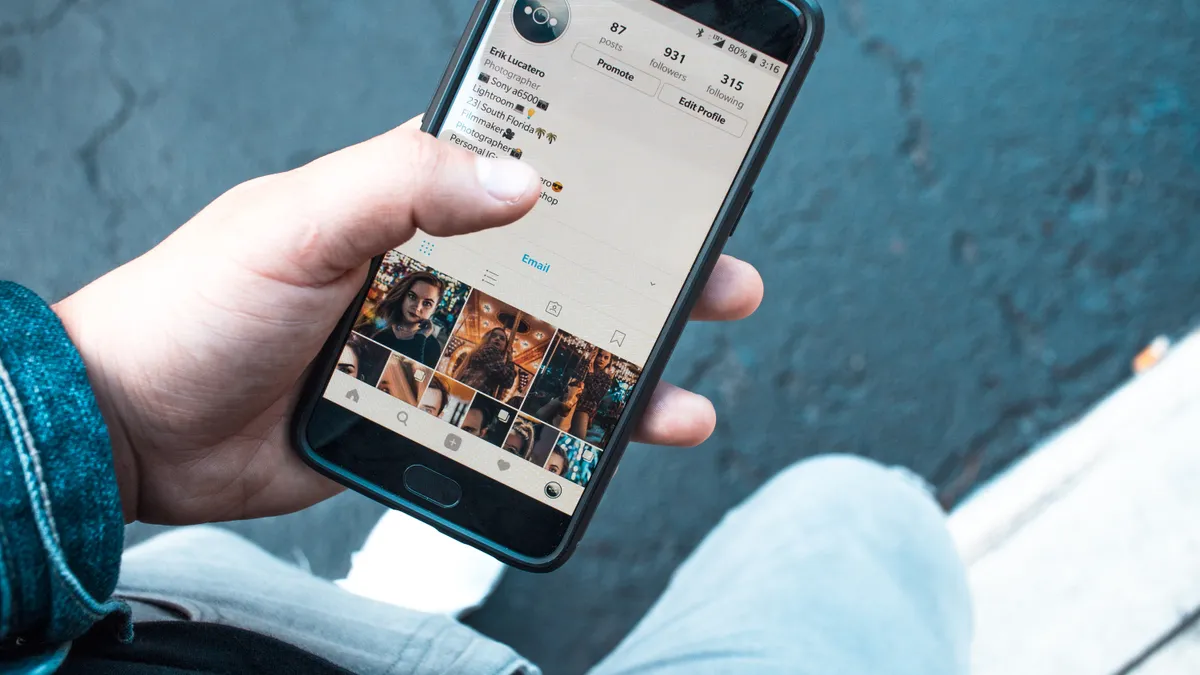Dive Brief:
- Instagram has expanded its Shopping tool to Instagram Stories, with brands like Adidas, Aritzia and The Kooples already using the feature, the company said in news shared with Marketing Dive
- Shoppable Instagram Stories will have a shopping bag sticker. Users can pause the story and tap to see more details, including additional images of the product, other products in the story, descriptions, price and a link directly to a brand's site to make purchases. More than one-third of Instagram Stories users said they've become more interested in a product or brand after seeing it on Stories, Instagram said in a blog post.
- In related news, Snapchat also expanded its e-commerce offerings by allowing shopping within Snapchat Stories, per Digiday. Ticket marketplace SeatGeek is using the feature to sell tickets for Los Angeles Football Club games. Snapchat has tested a feature within its Discover section that let users make purchases, and the platform has expanded the test to include Snap Ads and Story Ads, Digiday said. Snap also created shoppable augmented reality lenses in its self-serve ad platform and launched a bidding process that uses Snap Pixel to track purchases and help advertisers monitor conversions.
Dive Insight:
Instagram and Snapchat have grown to be fierce rivals — Instagram Stories is broadly viewed as a clone of the video and photo collage format Snapchat helped popularize — but the latest moves signal that both are eyeing stronger mobile commerce as a way to drive future revenue and attract more brands beyond traditional advertising. While Snapchat and Instagram remain go-to social media platforms for coveted young consumer groups, like millennials and Gen Zers, they face their share of obstacles when it comes to monetizing nascent content types like stories.
A recent study by Smartly.io found that marketers are only directing about 16% of their Instagram budgets to Stories, despite the feature's enormous popularity. Instagram Stories has attracted around 300 million Instagram users after launching just two years ago. Snapchat, for its part, has struggled to bring in new users and drive advertising revenue since its parent company, Snap, went public last March, and the app has weathered intense criticism for a widely disliked redesign rolled out earlier this year.
While both companies have dabbled in shoppable features before, extending those capabilities to stories could keep users engaged and bring in more interest from retail marketers, many of which are eagerly seeking out e-commerce opportunities as foot traffic and sales at brick-and-mortar locations dip. There have been some early successes for shopping sections on these sites. Nike in February became the first brand to sell products directly through the Snapchat app, with a Jordan brand shoe drop that sold out within minutes. Snapchat that month also opened its own e-commerce store.












